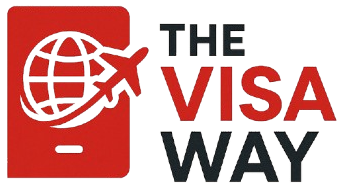Have a question
E-1 Visa
Here is a breakdown of the key requirements, benefits, and the general application process:
1. Key Eligibility Requirements
For the Trading Firm/Enterprise:
Treaty Nationality: At least 50% of the U.S. enterprise must be owned by nationals of the treaty country.
Substantial Trade: There must be a continuous flow of sizable international trade, involving numerous transactions over time (value and volume are both considered).
Principal Trade: More than 50% of the international trade conducted by the enterprise must be between the U.S. and the treaty country.
Trade Definition: Trade includes the international exchange of goods, services, and technology.
For the E-1 Principal Applicant (Trader) or Employee:
Nationality: The principal applicant or employee must possess the nationality of the treaty country.
Role (for employees): If the applicant is an employee, they must be coming to the U.S. to fill a position that is either:
Executive or Supervisory in nature, OR
Requires “Special Qualifications” that are essential to the efficient operation of the enterprise. Ordinary skilled and unskilled workers are generally not eligible.
Intent to Depart: The applicant must express an intent to depart the U.S. when their E-1 status ends.
2. Key Benefits
Renewability: The E-1 visa can be renewed indefinitely in two-year increments as long as the treaty trade continues to meet all requirements. There is no maximum limit on the number of extensions.
Work Authorization: The visa holder is authorized to work for the E-1 qualifying company in the position for which they were approved.
Family Inclusion: The spouse and unmarried children under the age of 21 may accompany the principal E-1 holder.
Spouses can apply for work authorization (an Employment Authorization Document or EAD) to work for any employer in the U.S.
Children may attend school or university without needing a separate student visa.
Travel Flexibility: E-1 visa holders generally receive a two-year period of admission upon re-entering the U.S., allowing for free international travel.
No Cap: Congress imposes no annual limit on the number of E-1 visas issued.
3. Application Process (General Steps)
Confirm Eligibility: Ensure the applicant and the company meet all requirements, especially the treaty country nationality and the “substantial” and “principal” trade requirements.
Complete Forms: The applicant must complete the DS-160 (Nonimmigrant Visa Application) and, for principal applicants and most employees, the DS-156E (Nonimmigrant Treaty Trader/Investor Application).
Pay Fees: Pay the required nonimmigrant visa application fees.
Gather Documentation: Compile a comprehensive packet of supporting documents that prove the company’s and applicant’s eligibility. This includes proof of nationality, ownership, trade volume (e.g., bills of lading, contracts, invoices), tax returns, and an organizational chart/job description (for employees).
Submit Application: Application procedures vary by consulate/embassy, but typically involve electronically submitting the application package to the U.S. consulate in the treaty country.
Interview: Attend a visa interview at the U.S. Embassy or Consulate.
Visa Issuance: If approved, the visa is issued in the passport, and the holder can travel to the U.S.
Note: The E-1 visa is a non-immigrant (temporary) visa. While it offers unlimited renewals, it does not provide a direct path to a U.S. Green Card (Lawful Permanent Residence). Applicants must maintain an intent to depart the U.S. when their status ends.




